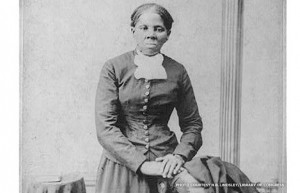
On Monday March 25, 2013 President Obama exercised one of the coolest powers of the presidency. He designated five new national monuments. Unlike designation of units of the National Park system, which require congressional action, the 1906 Antiquities Act authorizes the President to set aside public land, or land offered to the government, on his own initiative to ensure the future conservation of historic treasures and natural values. See press release.
Of these five new national monuments all but one, the Charles Young Buffalo Soldiers National Monument in Wilberforce, Ohio, preserve large swaths of landscape that offer multiple opportunities to connect to other preserved lands.
The First State National Monument in Delaware includes Dover Green, the New Castle Court House complex, and the large Woodlawn Trust property in the in the iconic Brandywine Valley. The Woodlawn property is 1,100 acres of protected land stretching along the Brandywine Creek in Delaware and into Pennsylvania. For more than a century, the land has been managed as a wildlife preserve and as open space for public recreation. The new monument connects the Hagley Industrial Site (235 acres) and Winterthur property (almost 1,000 acres) both legacies of the DuPont family with conserved land in Pennsylvania. There a mix of parks and scenic easements (40,000 acres) protect the landscape that inspired three generations of the Wyeth family as well as the terrain of the 1777 Battle of the Brandywine.
Harriet Tubman Underground Railroad National Monument is on Maryland’s Eastern Shore and includes landscapes in Dorchester County that are significant to Tubman’s early life and places that evokes her life as a slave and conductor of the Underground Railroad. According to the Presidential Proclamation, the monument boundaries encompass 11,750 acres, which includes lands that are part of Blackwater National Wildlife Refuge, managed by the U.S. Fish and Wildlife Service. The monument will partner with the State of Maryland’s Harriet Tubman Underground Railroad State Park Visitor Center, which is to be open to the public in 2015.
Río Grande del Norte National Monument in New Mexico is located northwest of Taos. It contains stretches of the Río Grande Gorge and extinct volcanoes that rise from the Taos Plateau. The monument will permanently protect 240,000 acres. The area is known for its spectacular landscapes, cultural resources, and recreational opportunities. The area is already part of the Bureau of Land Management’s Conservation Landscape program and will continue to be managed by that agency.
San Juan Islands National Monument in Washington is a chain of 450 islands, rocks and pinnacles located in Washington State’s Puget Sound. The region is home to bald eagles, orca whales, harbor seals and other rare species. The designation will protect more than 1,000 acres of undeveloped land on the individual islands containing American Indian sites and a maritime heritage marked by lighthouses.
Besides enriching nation’s portfolio of diverse cultural sites and spectacular natural places, these designations protect over 30,000 acres of land with the potential to connect to thousands more. All of the new national monuments received enthusiastic local backing and bi-partisan Congressional support. They offer great opportunities for future partnership at the local, state and national level.
Finally, let’s not forget the small national monument in Ohio that will preserve the home of Col. Charles Young (1864–1922). A distinguished officer in the United States Army, he was the third African American to graduate from West Point and the first to achieve the rank of Colonel. He also served as an army superintendent of Sequoia and General Grant National Parks before the National Parks Service establishment in 1916. In effect, he was one of the first to protect our great landscapes and is a worthy role model to help sustain our work in the future.


